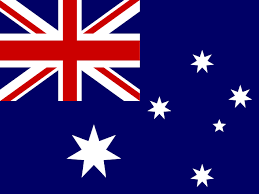Time in Australia Understanding Time Zones Daylight Saving and More

Australia, the sixth-largest country in the world, spans multiple time zones. Understanding the in Australia is crucial for travelers, businesses, and global communications. Whether you are planning a trip, scheduling a meeting, or just curious about the local time, this article will cover everything you need to know about Australia.
Time in Australia
Australia has three main time zones:
1. Australian Western Standard Time (AWST)
- UTC +8:00
- Covers Western Australia, including Perth.
2. Australian Central Standard Time (ACST)
- UTC +9:30
- Covers South Australia, the Northern Time in Australia, and some parts of New South Wales.
3. Australian Eastern Standard Time (AEST)
- UTC +10:00
- Covers Queensland, Victoria, Tasmania, New South Wales, and the Australian Capital Territory.
Some regions observe daylight saving time (DST), which affects these standard time zones.
Daylight Saving Time (DST) in Time in Australia
Daylight Saving Time is implemented in some states to maximize daylight hours. The clocks are moved forward by one hour in summer and back by one hour in winter.
States That Observe Daylight Saving Time
- New South Wales
- Victoria
- South Australia
- Tasmania
- Australian Capital Territory
States That Do Not Observe Daylight Saving Time
- Queensland
- Western Australia
- Northern Territory
Daylight saving usually starts on the first Sunday of October and ends on the first Sunday of April.
How to Check the Current in Australia
You can check the time in Australia through multiple methods:
- Using your smartphone or computer.
- Searching on Google for “current Australia.”
- Checking official time websites such as the Bureau of Meteorology.
Why Time Zones Matter in Australia
Impact on Businesses
Time in Australia multiple time zones impact businesses, especially those operating internationally. Understanding time differences is essential for effective communication.
Travel Considerations
If you are traveling within Australia, knowing the time zones helps in planning flights, train journeys, and hotel check-ins.
Sports and Entertainment Events
Major sports events in Australia, like the Australian Open and cricket matches, are scheduled according to local time zones.
FAQs About Time in Australia
1. How many time zones does Australia have?
Australia has three main time zones: AWST, ACST, and AEST. Some regions observe daylight saving time, creating additional variations.
2. Does all of Australia follow daylight saving time?
No, only New South Wales, Victoria, South Time in Australia, Tasmania, and the Australian Capital Territory observe daylight saving time.
3. What is the time difference between Sydney and Perth?
Sydney operates on AEST (UTC +10:00), while Perth follows AWST (UTC +8:00). The time difference is two hours, but during daylight saving time, Sydney moves to AEDT (UTC +11:00), making the difference three hours.
4. How can I convert my local time to Australian time?
You can use online world clocks or time zone converters to check the exact compared to your location.
5. Why does Australia have half-hour time zones?
Some parts of Australia, like South Australia and the Northern Territory, have a 30-minute difference from neighboring time zones to better align with local solar time.
Conclusion
Understanding the time in Australia is essential for both residents and visitors. With three primary time zones and daylight saving changes in some states, keeping track of Australian time can be challenging but manageable with the right tools. Whether for business, travel, or communication, knowing the local time in different parts of Australia ensures a smooth and hassle-free experience.



